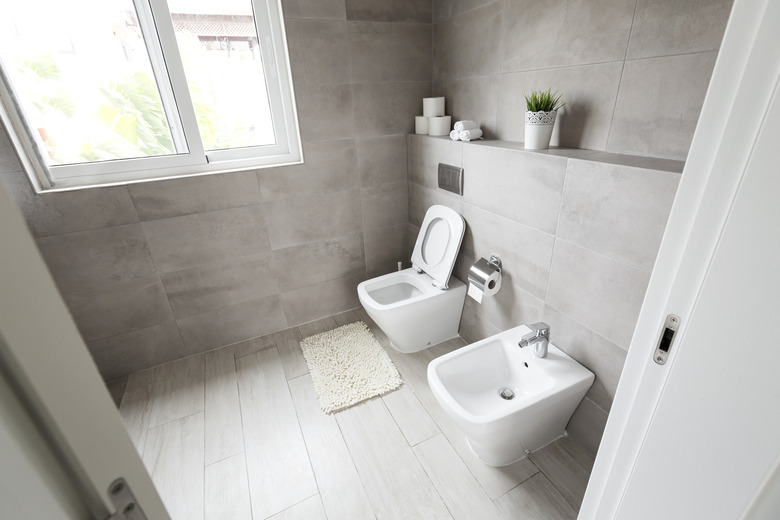How To Fix A Leaking Toilet Handle
We may receive a commission on purchases made from links.
Toilets can seem like an intimidating piece of plumbing to approach, but many common issues with a toilet can be easily addressed by a homeowner. One such issue is if your toilet is leaking around the handle.
How a Toilet Tank Works
How a Toilet Tank Works
The toilet in your home consists of two major parts: the upper tank that stores and releases water upon flushing the toilet and the bowl that rests on the ground. The bowl has no moving or mechanical parts, and most issues with a toilet will be centered on the tank. These include issues such as a constantly running toilet, weak flushes or a leaking handle. To understand these common problems and their solutions, it's good to know how a toilet tank works.
The toilet tank holds a certain quantity of water, which is released into the bowl when the flush handle is depressed. To accomplish this, it takes two major components: the flush valve and the fill valve, also called the ballcock or refill valve.
Toilet Fill and Flush Valves
Toilet Fill and Flush Valves
The fill valve is what fills the tank with water, automatically opening the water supply valve when the water level falls (as during a flush), then shutting off when the water reaches a certain level. If you open your toilet tank and look in, this valve will usually be located on the left side of the tank.
Depending on the type and configuration of fill valve, it can operate via a floating ball, float cup or water pressure sensor. The floating varieties are by far the most common and work via a piece (ball or cup) that floats on the surface and moves up and down with the water level. Floatless valves sense the pressure at the bottom of the tank.
SolvIt explains that the flush valve is what controls the evacuation of the water, and when at rest it is covered by the stopper (also called the flapper or tank ball). Lowe's explains that when you push the flush handle, a chain connected to the stopper pulls it open, and the water in the tank flows through the flush valve and into the toilet bowl. Once the tank is empty, the flush valve closes and the fill valve refills the tank.
Addressing a Leaking Toilet Handle
Addressing a Leaking Toilet Handle
When you find a leak around your toilet handle, it could be caused by three things: the water level being too high due to an issue with the refill mechanism, water spraying from the overflow tube or an issue with the handle. The water level in the tank should never reach the level of the handle, and many building codes require that the water level stay 1 inch below the overflow tube.
To address a leaking handle, first take the lid off your toilet tank and flush the toilet. Observe the mechanism for any issues and check to see if the water level is rising too high. If the water level is high, adjust the float valve by either gently bending the rod connected to the float or finding the screw at the top of the fill valve and turning it clockwise. Flush again to check the water level.
More Problems Causing Handle Leaks
More Problems Causing Handle Leaks
If the leak is called by water spraying from the overflow tube, this is often because the smaller tube that is usually clipped inside it has come unclipped and is spraying water around the tank. Simply pull the small tube back into the larger overflow tube and clip it back into place.
Finally, whether water is getting to the handle from a high water level or from spray, the handle itself should be replaced to make sure the seal is good. To replace the handle, first detach it from the flush valve, generally accomplished by unhooking it from the chain. Hold the handle with one hand and unscrew it from the other side, then remove it.
Insert the new toilet handle and gasket through the hole, then thread the screw that came with the handle into place. Reconnect the handle to the flush valve, and test everything by flushing again. The water level should stay below the handle, there should be no spray and the area around the handle should no longer leak.
